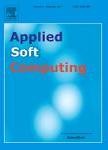版权所有:内蒙古大学图书馆 技术提供:维普资讯• 智图
内蒙古自治区呼和浩特市赛罕区大学西街235号 邮编: 010021

作者机构:Shanghai Maritime Univ Coll Informat Engn 1550 Haigang Ave Shanghai 201306 Peoples R China Univ Macau Zhuhai UM Sci & Technol Res Inst Zhuhai 519000 Peoples R China Shanghai Urban Construct Vocat Coll Dept Basic Educ Shanghai 201415 Peoples R China Shanghai Polytech Univ Inst Artificial Intelligence Sch Comp & Informat Engn Shanghai 201209 Peoples R China
出 版 物:《APPLIED SOFT COMPUTING》 (应用软计算)
年 卷 期:2024年第164卷
核心收录:
学科分类:08[工学] 0812[工学-计算机科学与技术(可授工学、理学学位)]
基 金:National Natural Science Foundation of China Shanghai Committee of Science and Technology, China
主 题:Whale optimization algorithm Feature selection Reverse information correction Quadratic interpolation Memory information interaction
摘 要:Feature selection is a key technique for data dimensionality reduction, and there are many challenges in facing the exponential expansion phenomenon of high-dimensional decision space. In order to improve the quality of feature selection, we propose a memory interaction quadratic interpolation whale optimization algorithm based on reverse information correction (RQWOA). First, in order to improve the convergence capability of the Whale Optimization Algorithm (WOA) in high-dimensional space, we propose a quadratic interpolation mechanism with memory information interaction, improve the quality of the datum points used for quadratic interpolation through the proposed memory interaction mechanism, and accelerate the convergence speed and accuracy of the algorithm with the help of the quadratic interpolation on the algorithm exploitation capability. In addition, to address the invalid probability flip in the feature selection subset when mapping to the discrete space, we propose a reverse information correction mechanism to judge and correct each dimension in the feature subset by using the reverse complementary information provided by individuals with poor fitness values in the population, so as to better remove invalid or redundant features and improve the quality of feature selection. Finally, in the 15 high-dimensional feature datasets compared with the comparison methods, the accuracy of RQWOA is improved by 7.49 % on average, and the number of features is compressed by 80.42 % on average, which indicates that the RQWOA algorithm has stronger feature identification and redundancy removal capabilities and can better solve the feature selection problem.